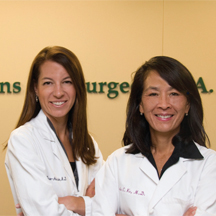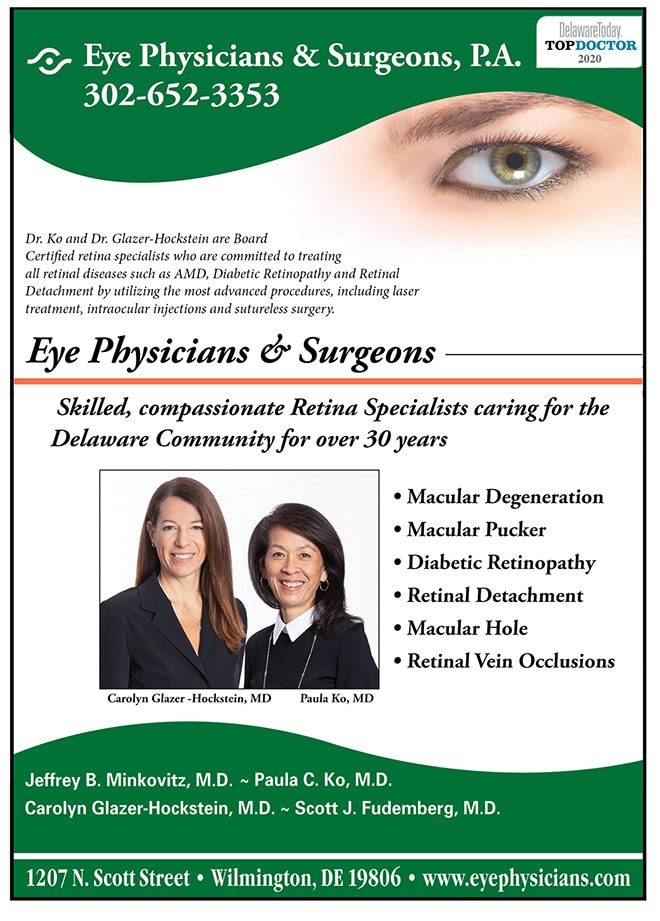Medical Technology & Diabetic Retinopathy
By Paula Ko, MD
Medical Device Technology these days is booming. In my field of retinal diseases, diabetic retinopathy is the leading cause of blindness in the United States in middle-aged Americans. The best way to decrease blindness for diabetes is to control blood sugars.
In this article I am going to list two devices which I believe have and will continue to improve the treatment, lives and outcomes of diabetic patients.
Continuous glucose monitor (CGM)
Insulin pump
The continuous glucose monitor and insulin pump are technological devices that have been around for a while, but each year they get better, smarter, and more reliable. I have many patients who tried these devices early on and gave up on them due to inadequacies, and years later tried them again and found them much more sophisticated and user friendly. It is like all other technology that starts out “clunky” but ends up sleek and sophisticated as time goes on and improvements occur.
The CGM (continuous glucose monitor) reads a patient’s blood sugars “real time” which alleviates the need for frequent finger sticks other than when a patient is calibrating the device. Some devices can connect to your/someone else’s iPhone for a constant graphic read on blood sugars. This device picks up trends before a patient’s blood sugar goes too high or too low. It inherently helps a patient control their diabetes by alleviating these large swings. It also lets a patient know how their blood sugars react to the foods they eat, stress, sleep, temperature, dehydration, time of day, insulin dosages, etc. There are many factors that go into someone’s blood sugar level. The CGM enlightens a patient and promotes better habits when they can immediately see the impact on their blood sugar. Some diabetic doctors advocate printing out the results of the CGM over a period of time to pick up trends in blood sugars and find what causes those trends. Post prandial blood sugar readings (BS readings after eating) are more important than ever as they give a more full picture of diabetic control.
The insulin pump continuously delivers insulin at a basal rate. This rate of insulin delivery can be automatically adjusted to the time of day. Before a patient eats, they give themselves a bolus of insulin without having to use a needle for injection. The insulin pump delivers insulin to the patient in a more “natural” way continuously, and also allows boluses when a meal is eaten. The pump also helps alleviate the highs and lows that lead to complications from diabetes. It helps the patient live a life less encumbered by constraints of scheduled eating after an insulin shot is given, as a bolus from the pump is much easier to do. More recently the pump and CGM can communicate in a closed-loop fashion so that the pump will suggest what doses of insulin to give, based on the CGM reading.
Both of these devices lead to much better diabetic control and therefore less blindness from diabetic retinopathy. For more information call 302-652-3353 or visit www.eyephysicians.com
Bios
Dr. Glazer-Hockstein graduated Cum Laude from Jefferson Medical College. She was a member of the Hobart Armory Hare Honor Medical Society and was elected to the Alpha Omega Alpha Honor Society. She also received the Carol R. Mullen prize in ophthalmology. She completed her residency at the Scheie Eye Institute, University of Pennsylvania. During that time she was elected Chief Resident. After residency, Dr. Glazer-Hockstein completed a two years medical retina fellowship at the Scheie Eye Institute, University of Pennsylvania. She has published multiple articles in peer-review journals and has lectured on a variety of retinal disease subjects. Her specialization includes but is not limited to: macular degeneration, retinal vascular disease, and diabetic retinopathy.
Dr. Ko graduated Cum Laude from the Ohio State University College of Engineering and received her M.D. degree from the Ohio State University College of Medicine, with honors. Following her residency in Ophthalmology at Temple, Dr. Ko served a prestigious fellowship at Georgetown University in diseases of the retina and vitreous and is Certified by the American Board of Ophthalmology. Dr. Ko’s area of expertise is in retinal problems, especially diabetic eye disease, macular degeneration, and retinal detachment. She lectures extensively and has published many papers on these topics. Dr. Ko is active in resident training and is on staff at Temple University, as well as at the Medical Center of DE. She is at the forefront of ophthalmic technology, and utilizes the most advanced procedures, including laser treatment, suture-less surgery and intraocular injections, in the care of her patients.



